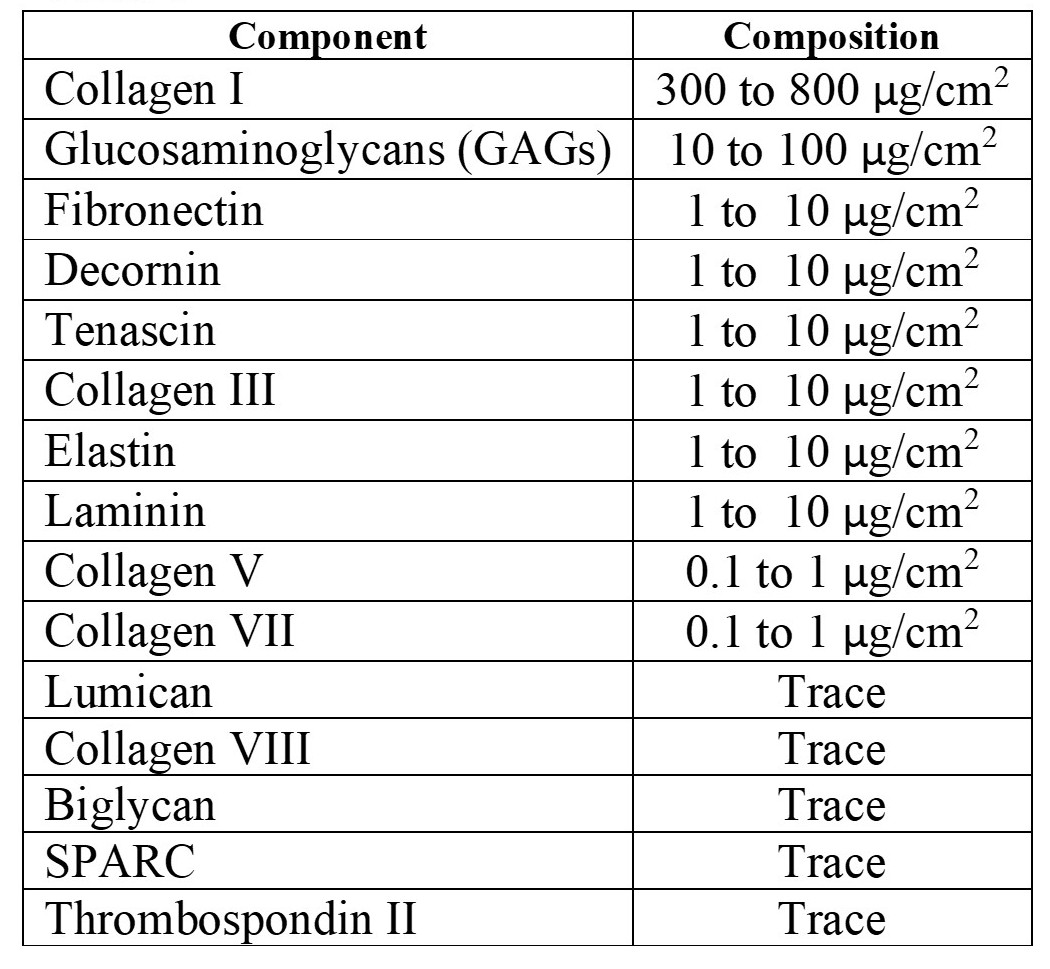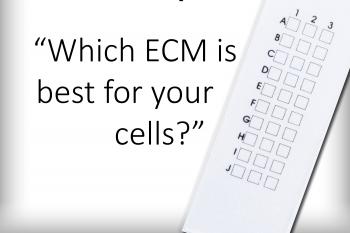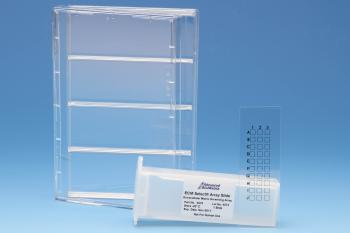Extracellular Matrices
Importance of the Extracellular Matrix
The extracellular matrix (ECM) is a three-dimensional network of proteins, enzymes, glycosaminoglycans and other macromolecules that provide structural and biochemical support of surrounding cells. The ECM is critical for cellular adhesion, communication, migration, differentiation, and countless other functions.
Growing cells on standard plastic cultureware eliminates all of in vivo benefits of the extracellular matrix. At Advanced BioMatrix, we provide highly purified extracellular matrix proteins to help create a natural environment for your cells. Surrounding cells with the correct environmental cues leads to more physiologically relevant research and discoveries.
These extracellular matrices include prominent proteins such as Collagen I, II, III, IV, V, Tropoelastin, Fibronectin, Vitronectin and Laminin.
Deciding on Which ECM to Use
If you are unsure which ECM proteins are best for culturing your specific cell type, then we would recommend trying the ECM Select® Array Kit Ultra-36.
ECM Select® is an extracellular matrix screening array. This product has thirty six (36) human extracellular matrix protein (ECM) conditions that are deposited onto the hydrogel surface as printed array spots.
Each ECM "condition" is printed as nine (9) replicate spots within each square on the slide (imaged right).
For example - within square A1, there are 9 dots of collagen type I. Within square K3, there are 9 dots of an ECM mixture of Tropoelastin and Collagen IV.
Once you see which ECM conditions are best for your cell adhesion, proliferation or differentiaton, simply purchase those highly purified ECM proteins from our broad catalog.

Below, you will see a diagram of all 36 ECM conditions printed on the ECM Select®. As a reminder, each square has 9 replicate dots of the ECM protein/combination of proteins. This creates a total of 324 data points for your experiment.
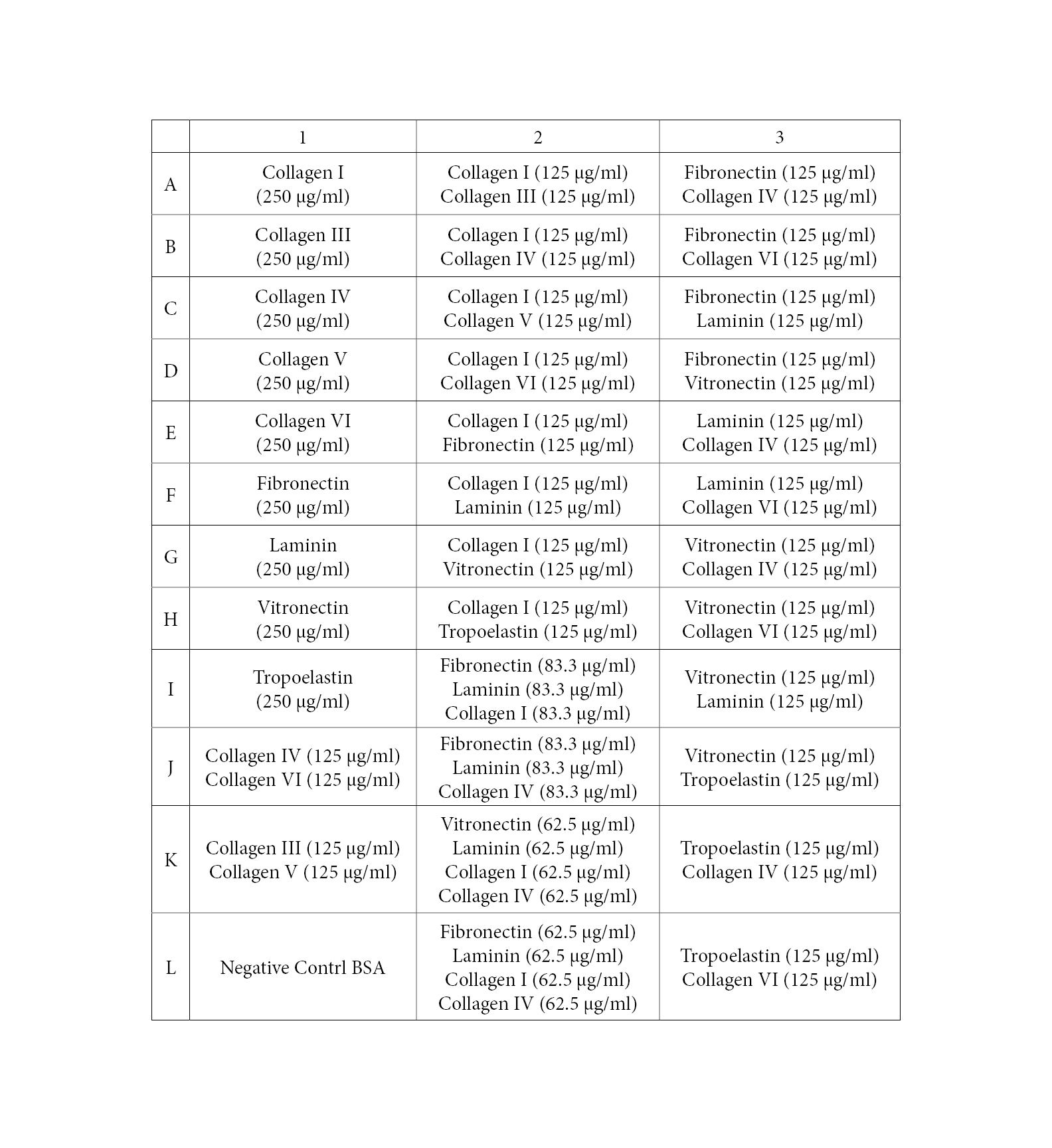
Examples of cell attachment within a single condition (9 replicate spots) on an ECM Select® Array Kit (below). The left image shows MCF 7 cells, while the right images shows human hepatocytes.
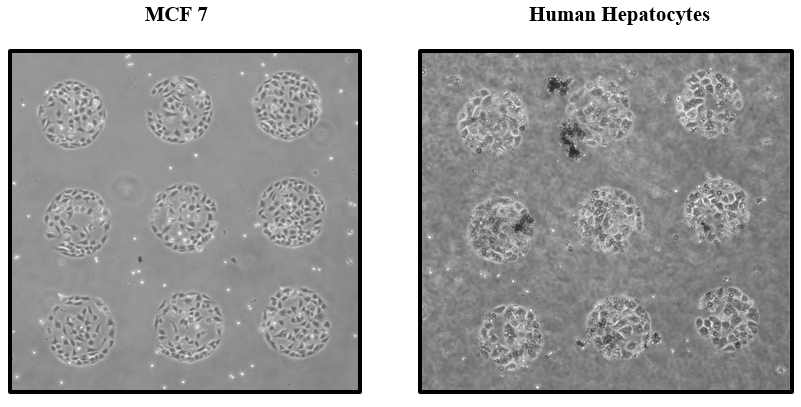
Images were taken on a 5x objective lens.
ECM Composition in the Body
The composition of ECM in the body mostly contains collagens. There are numerous other matrix protein and molecules that make up complex structures in various tissues. In addition to the over 18 types of collagen, there are glycoproteins such as fibronectin, elastin, laminin and vitronectin. Also contained in the ECM are a number of proteoglycans and glucosaminoglycans of which hyaluronic acids is the most prevalent.
A partial composition of ECM secreted from human neo-natal fibroblasts has been produced and evaluated.
The table to the right provides a list of components identified in human fibroblast-produced ECM. Assays for other ECM component were not either available or feasible at the time this experimental work was done. The results do provide, in general, important information as composition and relative quantities of ECM components tested.
Collagen represents the majority of ECM present, followed by Glucosaminoglycans.
